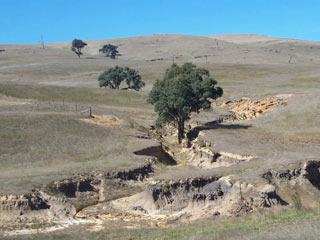
Here are some books that you may find useful during your studies. Search the Bennies catalogue Accessit for more, or browse the Non-fiction collection NFS..
Providing Australia with solutions for water resources management while protecting and restoring our major water ecosystems.
Water is a limited and precious resource and must be managed both for immediate needs and for long-term economic and environmental sustainability. With the effects of climate change now a reality, and increasing demands for water, sound policies are required to ensure a sustainable supply of water for present and future generations.
Learn about policies and programmes for the management of land and water resources in Australia.
Salinity is a measure of the content of salts in soil or water. Salts are highly soluble in surface and groundwater and can be transported with water movement. Large salt deposits are a natural feature of vast areas of the Australian landscape, stored deep in soils or as surface salt deposits and salt lakes. This natural distribution of salt in the landscape is referred to as 'primary salinity'.




 Current Environmental Issues
Current Environmental Issues
 Current Social Issues
Current Social Issues
 Geodate
Geodate
This journal covers issues in the environment, natural history, biology, conservationism, geography and current affairs. Published by the National Geographic Society, a non-profit organisation determined to increase widespread geographic knowledge.
National Report by Australia on Measures Taken to Support Implementation of the United Nations Convention to Combat Desertification
Commonwealth Intergovernmental Working Group for the UNCCD, April 2002